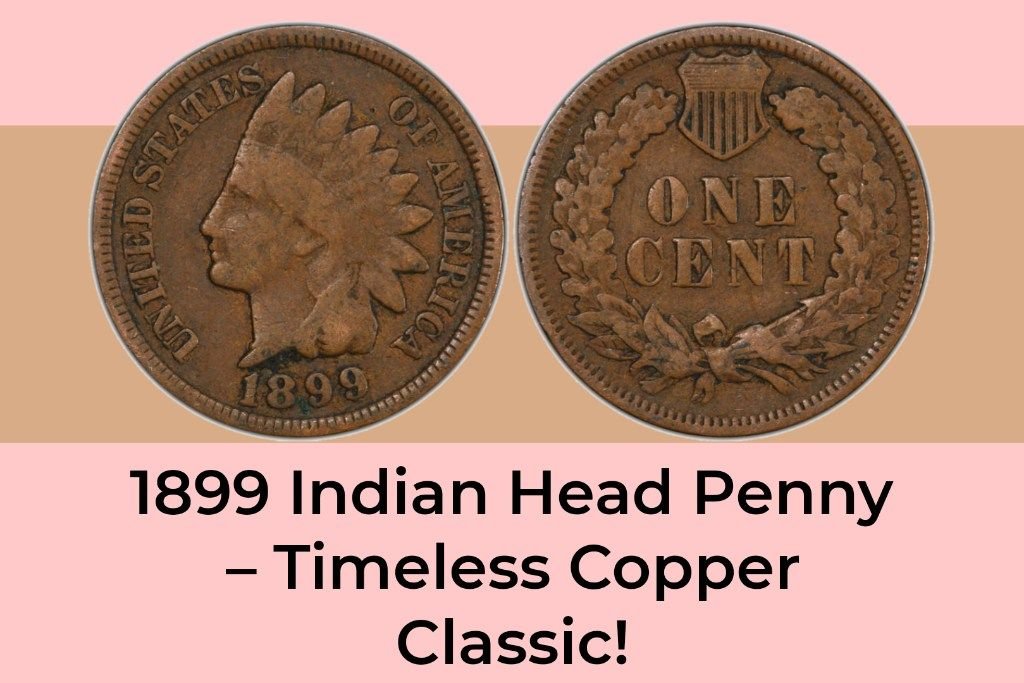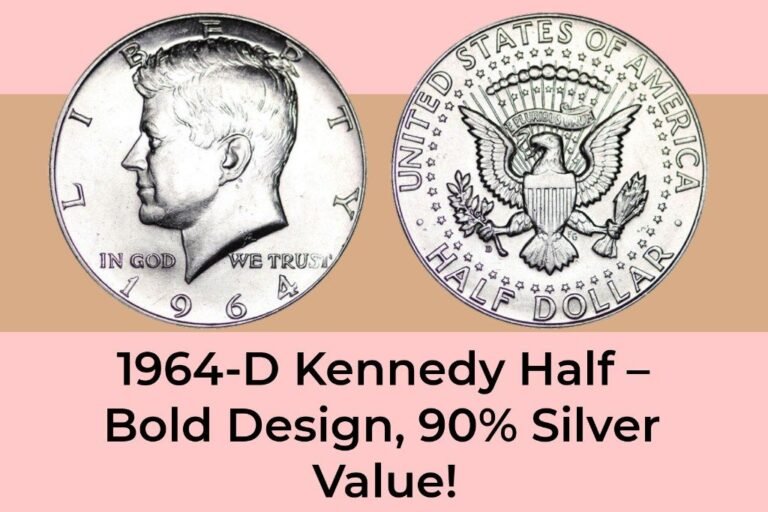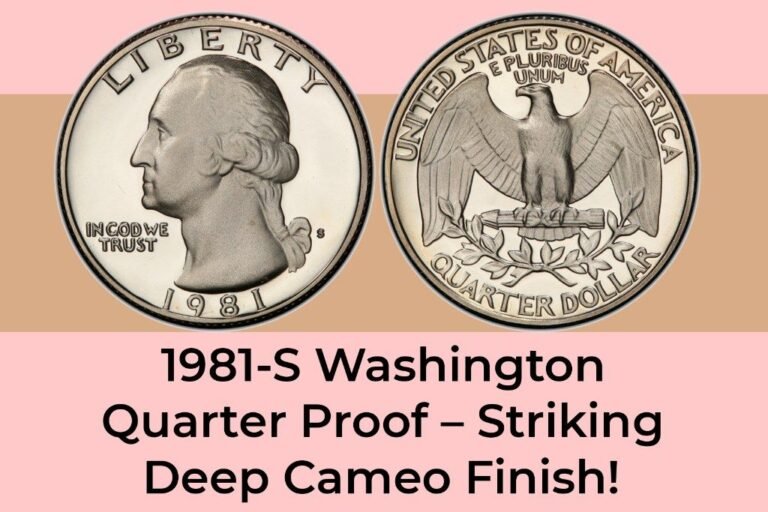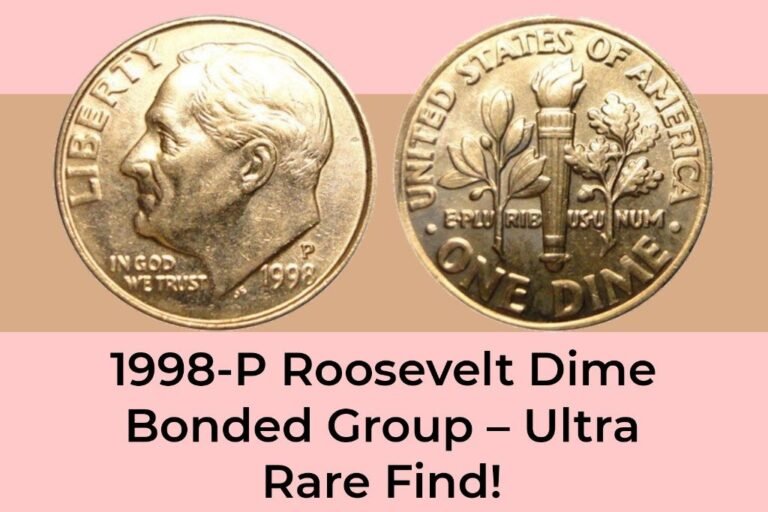1899 Indian Head Penny – Among the most beloved and enduring coins in American numismatics, the 1899 Indian Head Penny stands as a shining example of late 19th-century craftsmanship and historical charm. More than just a one-cent piece, this small copper coin captures a pivotal era in U.S. history and remains a favorite among collectors for its beauty, accessibility, and nostalgic appeal.
A Legacy in Bronze
The Indian Head Penny was minted from 1859 to 1909, replacing the Flying Eagle Cent and serving as a precursor to the Lincoln Wheat Penny. Designed by James B. Longacre, Chief Engraver at the U.S. Mint, the coin features a striking image of Lady Liberty wearing a Native American headdress—often mistaken for a depiction of an Indigenous person, but in fact a symbolic representation of freedom and national identity.
The obverse displays Liberty in profile with the word “LIBERTY” atop a ribbon and the date below. The reverse, used from 1864 onward (including the 1899 issue), shows the denomination “ONE CENT” encircled by a wreath of oak and wheat, with a shield at the top symbolizing strength and unity.
Why the 1899 Stands Out
While not the rarest date in the Indian Head series, the 1899 Indian Head Penny holds a special place for several reasons:
- End-of-Era Appeal: Minted just a decade before the series was retired, the 1899 penny represents the twilight years of a classic design. Collectors often seek these later dates as part of a complete set.
- Moderate Mintage: With a total mintage of 29,130,000 coins—struck exclusively at the Philadelphia Mint (no mint mark)—the 1899 is relatively common compared to earlier, scarcer issues like the 1877. This makes it more accessible to new and experienced collectors alike.
- Survival Rate: Because of its higher mintage and the fact that pennies were heavily used in daily commerce, many 1899 Indian Heads show signs of wear. However, a significant number have survived in collectible condition, especially in grades from Good (G-4) to Extremely Fine (EF-40).
Also Read: Is Your 1932-D Quarter Worth a Fortune? Find Out!
Value: Affordable Yet Rewarding
One of the great appeals of the 1899 Indian Head Penny is its affordability. Unlike rarer dates that can cost thousands, this coin offers excellent value for collectors on a budget.
Here’s a general guide to its current market value:
- Good (G-4) to Very Good (VG-8): $10 – $20
- Fine (F-12) to Very Fine (VF-20): $25 – $40
- Extremely Fine (EF-40): $50 – $70
- Uncirculated (MS-60 to MS-63): $100 – $180
- Gem Uncirculated (MS-65): $250 – $400+
Coins with original red or red-brown coloration (designated as “RD” or “RB” by grading services) command higher premiums, especially in top grades. Deep, rich luster and sharp detail enhance eye appeal and value.
Also Read: Top-Graded 1860-O Seated Liberty Dime (MS67) – A True Rarity
A Symbol of a Changing America
The year 1899 marked the end of the 19th century—a time of rapid industrialization, westward expansion, and shifting social dynamics. The Indian Head Penny, though a simple coin, circulated through saloons, general stores, and bustling city streets, touching countless lives. It was money in the pockets of farmers, laborers, and families during a transformative period in American life.
Just ten years after the 1899 issue, the Indian Head design would be retired and replaced by the Lincoln Cent in 1909—making coins like this a nostalgic farewell to a bygone era.
Tips for Collectors
- Check for Wear: Focus on high points like Liberty’s cheek, hair, and the wreath on the reverse. Even minor wear affects grade and value.
- Avoid Cleaned or Altered Coins: Many old pennies have been wiped, dipped, or polished, which reduces their worth. Original, untouched surfaces are preferred.
- Seek Professional Grading: For uncirculated or high-grade examples, certification from PCGS, NGC, or ANACS adds authenticity and market confidence.
A Timeless Treasure
The 1899 Indian Head Penny may not be the rarest or most expensive U.S. coin, but it is undeniably one of the most timeless. Its elegant design, historical significance, and affordability make it a cornerstone of many collections. Whether you’re a beginner or a seasoned numismatist, this copper classic offers a tangible connection to America’s past—one cent at a time.
So if you find an 1899 Indian Head Penny in an old drawer, coin roll, or estate sale, take a moment to appreciate it. It’s more than just a penny—it’s a piece of living history.




